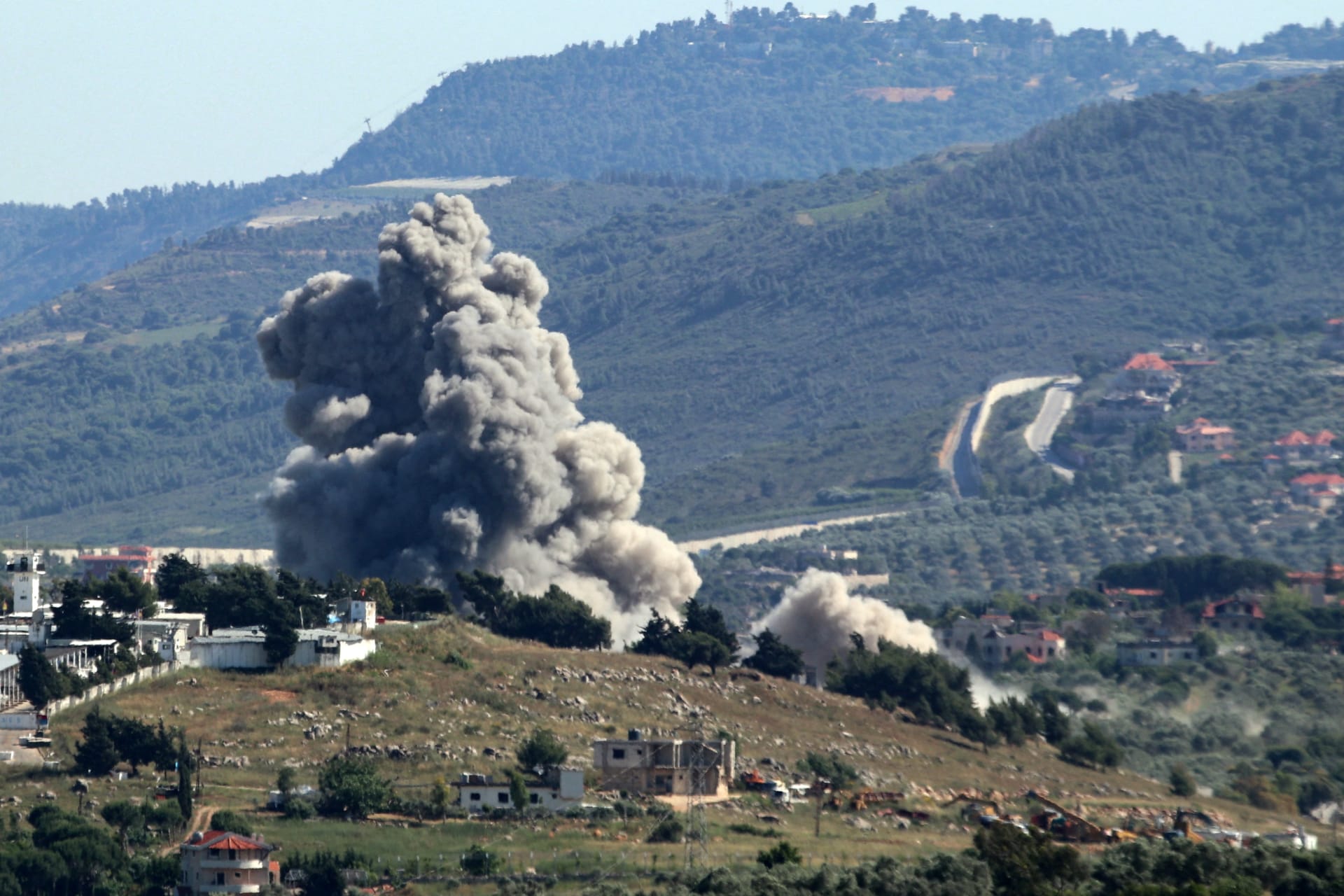Table of Contents
- What Does "كم المسافة بين ايران واسرائيل" Truly Mean?
- Is a Straight Line the Only Way to Measure "كم المسافة بين ايران واسرائيل"?
- Thinking About Air Travel and "كم المسافة بين ايران واسرائيل"
- What About Land Paths and "كم المسافة بين ايران واسرائيل"?
- The Watery Ways - Sea Routes and "كم المسافة بين ايران واسرائيل"
- How Do Obstacles Change "كم المسافة بين ايران واسرائيل"?
- The Idea of "كم المسافة بين ايران واسرائيل" on a Map
- Why "كم المسافة بين ايران واسرائيل" Can Feel Different
When folks talk about "كم المسافة بين ايران واسرائيل," they're often thinking about more than just a simple measurement on a map. It's a question that brings to mind geography, sure, but also the paths things might take, the air above, and even the waters below. This isn't just about a single number; it's about the various ways one might consider the space that separates these two places. We're going to look at what that really means, and how we can think about it in a few different ways.
You see, asking "how far" can be a bit like asking "how long is a piece of string" without knowing what the string is for, or so it's almost. Is it a straight line, perhaps? Or are we thinking about how someone might actually travel, maybe by plane, or by car, or even by boat? Each of these ways of moving from one spot to another changes the idea of distance, making it a rather interesting thing to consider.
So, we're not just pulling out a ruler here. We're going to explore the various dimensions of this question, looking at the different kinds of "distance" that exist, and what factors shape them. It's about getting a fuller picture, you know, a bit like looking at a puzzle from all its angles. That way, we can really appreciate what "كم المسافة بين ايران واسرائيل" truly involves.
- Diva Flawless Leak Erome
- Diva Flawless Nide Videos
- Indian Uncut Web Series
- Lia Engel Onlyfans
- Aditi Mistry Nude Nipslip While Live
What Does "كم المسافة بين ايران واسرائيل" Truly Mean?
When someone asks "كم المسافة بين ايران واسرائيل," what do they honestly mean by "distance"? Is it the shortest possible line drawn on a globe, straight through the air, perhaps? Or is it about the actual path one might have to take, considering borders, mountains, or even bodies of water? The answer, as a matter of fact, isn't always as simple as it might seem on the surface. We tend to think of distance as a single, fixed number, but the truth is, it's a concept with many layers, especially when we're talking about two places that are not directly next to each other.
To put it another way, the "distance" could be a measure of how far a bird flies, or it could be the length of a road trip, or even the time it takes to get from one point to another. Each of these interpretations changes the actual numerical value we might come up with, and so, it's important to clarify what kind of "كم المسافة بين ايران واسرائيل" we're trying to figure out. It's not just a physical measurement; it's also about the routes that are possible, or the ones that are not, really.
Consider, for instance, how maps work. A flat map can sometimes distort the true distances on a round earth. So, the straight line on a map might not be the actual shortest path in the air. This little detail can make a big difference when we talk about "كم المسافة بين ايران واسرائيل," as it brings in the idea of how we represent our world, and how that representation affects our perception of space. It's a bit like trying to flatten an orange peel; some parts just get stretched, you know?
Is a Straight Line the Only Way to Measure "كم المسافة بين ايران واسرائيل"?
Many people, when they first think about "كم المسافة بين ايران واسرائيل," picture a straight line, an imaginary thread pulled tight between the two points. This is often called the "as the crow flies" distance, or the geodesic path, which is the shortest possible route on the surface of a sphere, like our planet. It ignores all the things that might get in the way, like mountains or seas, or even other countries. It's a theoretical measurement, basically, a pure geometric figure.
But is that straight line the only way to think about "كم المسافة بين ايران واسرائيل"? Not really. While it gives us a baseline, it doesn't tell us much about practical travel. For example, if you were to try and travel that straight line, you'd find yourself going over land and water, and through the air, perhaps even over places where travel isn't allowed. So, while it's a good starting point for a simple calculation, it's usually not the full story, at the end of the day.
This "straight line" concept is useful for things like air traffic control or missile trajectories, where the physical landscape below is less of an immediate concern than the curvature of the earth. However, for anyone actually planning a trip, or trying to understand the logistical challenges of moving goods or people, this measure of "كم المسافة بين ايران واسرائيل" is just one piece of a much larger puzzle. It's just a little part of the bigger picture, you see.
Thinking About Air Travel and "كم المسافة بين ايران واسرائيل"
When we talk about "كم المسافة بين ايران واسرائيل" in terms of air travel, things get a little different from the straight line idea. Airplanes don't always fly in a perfectly straight path. They follow specific air corridors, which are like invisible highways in the sky. These corridors are designed to keep planes safe, to manage traffic, and sometimes, to avoid certain airspaces. So, an airplane's route might be longer than the direct "as the crow flies" path, or so it seems.
Air travel distances for "كم المسافة بين ايران واسرائيل" are also influenced by things like wind patterns, which can make a flight faster or slower, and thus, change the effective distance in terms of time. Also, there are no direct flights between the two places, which means any journey would involve stops and detours, adding significantly to the overall travel time and perceived distance. This makes the actual path taken by an aircraft a more complex calculation than just measuring from point A to point B on a map, naturally.
The concept of "air distance" for "كم المسافة بين ايران واسرائيل" is therefore a practical one. It's about how commercial or military aircraft would actually cover the ground, taking into account all the operational realities of flying. This includes not just the physical separation but also the routes that are permitted or preferred. It's a much more realistic way to think about how far apart these places are in terms of moving through the sky, you know, like your car on a road, but in the air.
What About Land Paths and "كم المسافة بين ايران واسرائيل"?
Considering "كم المسافة بين ايران واسرائيل" by land is a completely different ball game. You can't just drive a car or walk in a straight line across borders and through various countries without permission. Land routes are shaped by geography, like mountains and deserts, and by political boundaries, which dictate where people and goods can actually go. So, the idea of a simple straight path becomes pretty much impossible when you're talking about traveling by land.
Any land journey between these two places would involve crossing through several other nations, each with its own set of rules and border controls. This means the actual road distance for "كم المسافة بين ايران واسرائيل" would be considerably longer than the air distance. It would involve many turns, detours, and stops, making it a very different kind of "distance" altogether. You're looking at a path that weaves and winds, pretty much.
So, when someone asks about "كم المسافة بين ايران واسرائيل" by land, they're really asking about a network of roads, border crossings, and the political landscape that dictates where one can and cannot go. It's a measure that takes into account the physical obstacles and the human-made ones, painting a picture of how far apart these places are in terms of actual ground travel. It's a real journey, you know, not just a theoretical line.
The Watery Ways - Sea Routes and "كم المسافة بين ايران واسرائيل"
Then there's the possibility of sea travel when considering "كم المسافة بين ايران واسرائيل." Both places have coastlines, but the sea route isn't a direct shot either. Ships must follow established shipping lanes, avoid shallow waters, and respect territorial waters of other nations. The journey by sea would involve navigating through bodies of water like the Persian Gulf, the Arabian Sea, and potentially around the Arabian Peninsula to reach the Mediterranean Sea, where Israel has a coastline. This makes the sea distance for "كم المسافة بين ايران واسرائيل" a very long and winding path, honestly.
The actual distance a ship travels is far greater than any direct line, as it must account for coastlines, islands, and international maritime laws. For instance, a vessel starting from an Iranian port in the Persian Gulf would need to exit the Gulf, travel through the Strait of Hormuz, move into the Arabian Sea, and then likely pass through the Red Sea and the Suez Canal to reach the Mediterranean. This chain of passages adds a significant amount of mileage to the "كم المسافة بين ايران واسرائيل" calculation by water, you know, like taking the long way around.
Therefore, when we think about "كم المسافة بين ايران واسرائيل" in terms of sea routes, we're talking about a logistical challenge that involves extensive travel over vast expanses of ocean and through critical waterways. It's a type of distance that highlights the global nature of shipping and the geographical barriers that shape maritime trade and movement. It's a completely different scale of travel, to be honest.
How Do Obstacles Change "كم المسافة بين ايران واسرائيل"?
Obstacles play a massive role in how we perceive and measure "كم المسافة بين ايران واسرائيل." These aren't just physical barriers like mountains or large bodies of water. They also include things like national borders, no-fly zones, or areas of political tension. These elements can force any travel route to take a much longer, indirect path, making the effective distance much greater than a simple straight line measurement. So, the presence of these obstacles truly changes the meaning of "how far," quite significantly.
For instance, if a direct flight path for "كم المسافة بين ايران واسرائيل" is blocked due to airspace restrictions, planes must reroute, adding hours and hundreds of miles to the journey. Similarly, land travel is entirely dependent on open borders and safe passage through neighboring countries. Without these, the land distance becomes practically infinite, or at least, impossible to measure in a meaningful way for direct travel. It's like having a wall in the middle of your path, you know?
These obstacles mean that the "كم المسافة بين ايران واسرائيل" is not just about geography, but also about geopolitics. The distance isn't static; it changes based on agreements, conflicts, and the practical realities of international relations. It's a dynamic measurement, one that shifts with the currents of the world, making it a rather complex thing to pin down precisely, apparently.
The Idea of "كم المسافة بين ايران واسرائيل" on a Map
When you look at "كم المسافة بين ايران واسرائيل" on a map, you might see a certain separation. However, different types of maps show distances in different ways. A flat map, for example, often uses a projection that distorts sizes and distances, especially over large areas. This means the straight line you draw on a paper map might not be the actual shortest distance on the curved surface of the Earth. It's a bit like trying to iron out a crumpled piece of paper; some parts just won't lie flat, you know?
To get a more accurate sense of "كم المسافة بين ايران واسرائيل" on a map, one would ideally use a globe or a specialized mapping tool that accounts for the Earth's spherical shape. These tools can calculate the geodesic distance, which is the true shortest path over the planet's surface. This is usually the number people refer to when they talk about "as the crow flies" distance, but even then, it's a theoretical measure that doesn't account for real-world travel limitations. So, you know, it's just one way to look at it.
The visual representation of "كم المسافة بين ايران واسرائيل" on a map, therefore, gives us an initial impression, but it's important to remember its limitations. It's a tool for understanding relative positions, but not always for precise, practical travel distances. The lines and scales on a map are just guides, and the actual journey would be much more involved, to be honest.
Why "كم المسافة بين ايران واسرائيل" Can Feel Different
The "كم المسافة بين ايران واسرائيل" can sometimes feel different depending on the context. For someone looking at a world map, it might seem like a manageable skip. For a pilot planning a flight, it's a specific number of nautical miles, plus considerations for airspace and fuel. For someone thinking about land travel, it feels like an immense journey, crossing multiple borders and vast territories. So, the perception of "how far" is really quite varied, and so it's almost.
This difference in feeling about "كم المسافة بين ايران واسرائيل" comes from the different ways we conceptualize distance. Is it about pure geographical separation, or about the effort, time, and resources required to cover that separation? The emotional or strategic "distance" can also be a factor, making a geographically close place feel far away due to political barriers, or vice versa. It's a very human way of looking at things, actually.
Ultimately, "كم المسافة بين ايران واسرائيل" is a question with many answers, each valid within its own context. There isn't one single, universally correct number that captures every aspect of the separation between these two places. It's a concept that expands and contracts based on how you measure it, what mode of travel you consider, and the real-world conditions that shape any journey. It's a bit like trying to measure the length of a river; it changes depending on whether you follow every curve or just draw a straight line from source to mouth, you know?
Related Resources:



Detail Author:
- Name : Prof. Margie Reinger
- Username : beverly.bogisich
- Email : lgoldner@hotmail.com
- Birthdate : 1987-05-16
- Address : 87053 Danny Common Suite 501 Armstrongton, PA 25478
- Phone : 1-409-370-9719
- Company : Hackett, Hand and Hegmann
- Job : Housekeeping Supervisor
- Bio : Quidem optio ut dicta nostrum. Earum iusto qui assumenda sed enim aliquid ut. Nemo dicta cum porro autem. Quidem explicabo ut provident voluptatem ut quia tenetur sit. Eius et nobis officiis quae.
Socials
linkedin:
- url : https://linkedin.com/in/doradavis
- username : doradavis
- bio : Rem odit molestiae accusamus at eveniet qui aut.
- followers : 5528
- following : 741
instagram:
- url : https://instagram.com/ddavis
- username : ddavis
- bio : Quisquam fugit et id provident itaque. Laudantium saepe dolores iure.
- followers : 4901
- following : 2982
twitter:
- url : https://twitter.com/dora8809
- username : dora8809
- bio : Adipisci beatae quasi ut tempore. Facere quas laborum quis fugiat accusantium sint. Sint explicabo unde ipsa quia iusto qui in.
- followers : 5299
- following : 1433
tiktok:
- url : https://tiktok.com/@dora7170
- username : dora7170
- bio : Incidunt facilis aut nisi nobis deleniti doloribus quis.
- followers : 946
- following : 1750
facebook:
- url : https://facebook.com/doradavis
- username : doradavis
- bio : Doloribus quas qui perferendis labore ea in asperiores.
- followers : 1061
- following : 2114